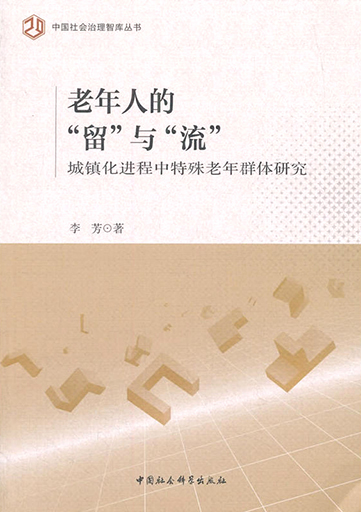How to Achieve Social Integration of Special Elderly

Left-Behind Elderly and Floating Elderly in the Process of Urbanization
Since the reform and opening up, unprecedented population mobility has arisen amid rapid industrialization and urbanization. The floating population has increased from 6.57 million in 1982 to 241 million in 2018. Both the scale and speed of this growth have rarely been seen. Floating population refers to those who leave their places of household registration and move to other places, especially big cities, for various reasons.
In Left-Behind Elderly and Floating Elderly in the Process of Urbanization, Li Fang studies the issue of the left-behind and floating elderly in the era of population mobility.
From the perspective of urbanization, the author regards the left-behind elderly and floating elderly population as a group that may progress and be converted into each other. When the left-behind elderly move towards their children, live with or nearby their children, they turn into floating elderly; when their children return to the elderly, they turn into non-left-behind elderly. When the floating elderly return to their places of household registration and live separately from their children, they turn into left-behind elderly.
The book proposes to protect the rights of the floating elderly and the left-behind elderly. For the elderly with the desire and means, the strategy of mobility should be adopted to guide and encourage the elderly to live with their children or live nearby. For those who lack the desire and means, the local strategy should be adopted to ensure the elderly share sufficient and high-quality geriatric resources in their places of residence.
The book discusses the impact of the floating elderly on the supply of aged care facilities and services in areas of inflow for this group and their difficulty in integrating into local communities. It also discusses the imbalancing of the population structure of the outflow regions of elderly and difficulties in supporting the local left-behind elderly.
The book has two focuses: One is to discuss the left-behind elderly in rural areas. Based on data analysis, the author explores the heterogeneity of personal features, family characteristics and intergenerational relationships of the left-behind elderly, the semi-left-behind elderly and the non-left-behind elderly. In terms of care services, the author proposes to establish a system of “three pillars” (self and spouse, family members, government and society), “two fields” (families and communities), and “a line of defense” (a social security system for the elderly).
The other focus is the problem of floating elderly in urban areas. Based on data from self-sponsored surveys, the author discusses the main characteristics and residence intentions of the urban floating elderly and theoretically constructs a system of indicators for their social integration.
edited by YANG LANLAN
